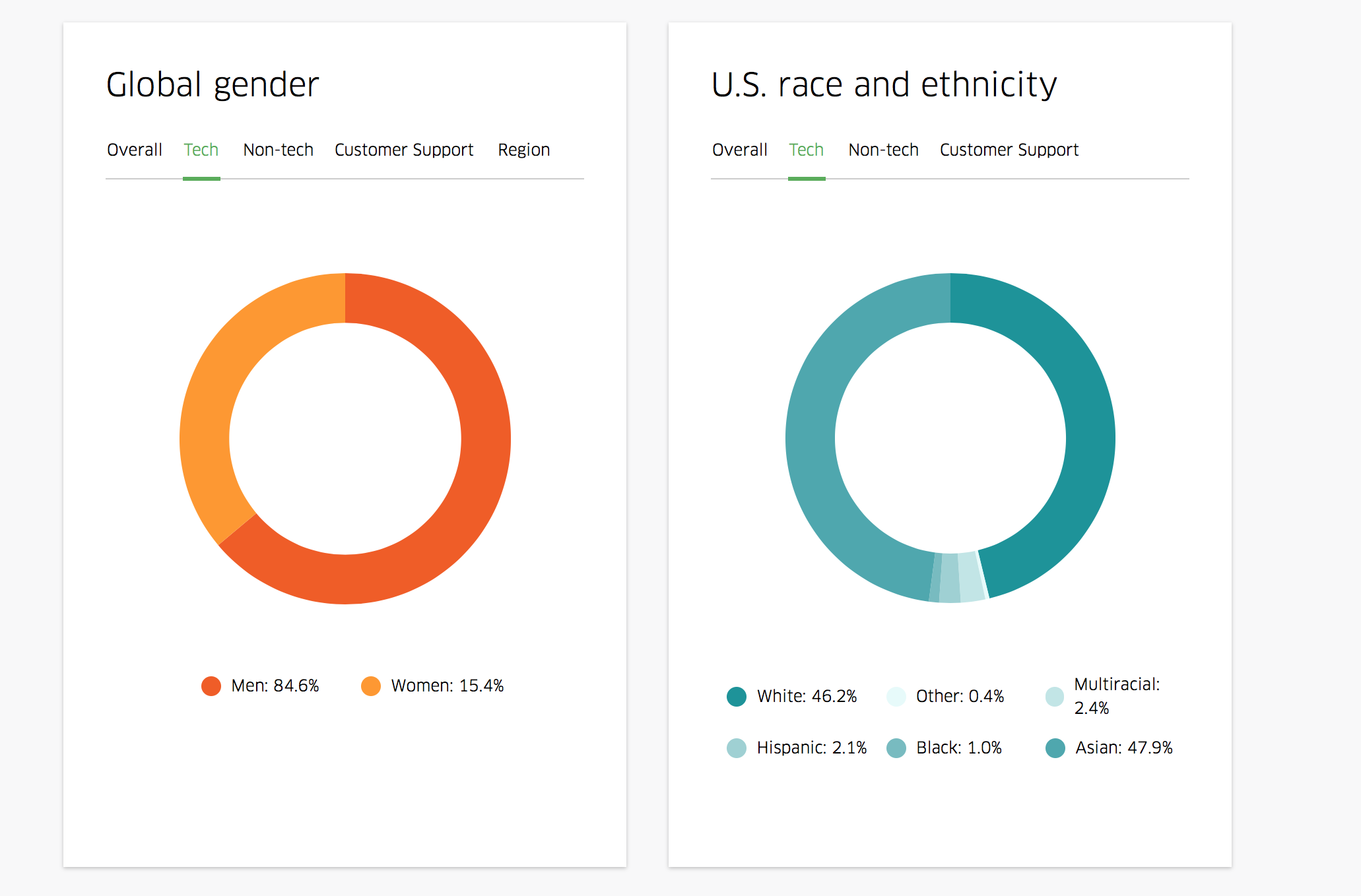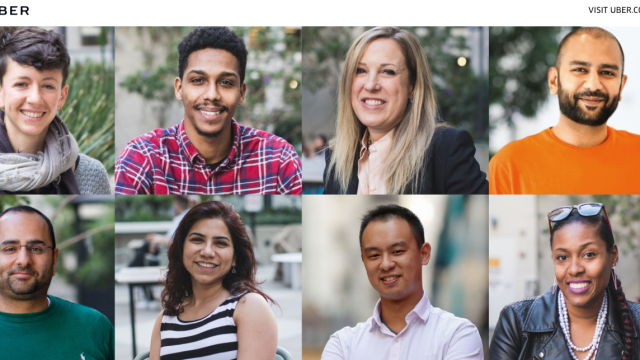If Uber was hoping the release of its first ever diversity report would deflect from its recent string of PR calamities, it thought wrong. Released Tuesday, the report and accompanying EEO filing are unimpressive at best, even by Silicon Valley’s notoriously low standards for diversity. Women make up less than a third of the company, there are no black/Latinx workers in tech leadership, and underrepresented minorities are clustered in middle-income customer service jobs.
Uber has faced particular scrutiny for its treatment of women since Susan Fowler, a former engineer, made highly public allegations of harassment and misogyny at the company. According to Uber’s EEO data, women make up about 29 per cent of its US workers and hold only 15 per cent of the tech jobs at the company. Among its peers, that puts it behind Apple (30 per cent), tied with Google (29 per cent) and better than the flailing Microsoft (25 per cent), but does little to refute the notion that women have trouble rising in the company.

Uber
Worse yet, no black or Latinx employees have leadership positions in the company’s tech divisions. In fact, the EEO lists only four black/Latinx leaders for the entire company. That’s abominable, but that’s true everywhere. Google, for example, only has one black/Latinx leader and is still somehow ahead of Uber, percentage-wise. This is why tech can’t be applauded for “efforts” in diversity or throwing out a scholarship every now and then — the numbers are horrific industrywide.
Black and Latinx employees are largely clustered (“segregated” would be an unkind way of saying it) into customer service. Forty eight per cent of customer service workers are black or Latinx. Compare that to just three per cent of tech workers. For every one black or Latinx person in tech, there are 10 times as many in customer service. That isn’t diversity.
Leadership is also crucial because these are the people making decisions about the company — deciding which cities to expand to, extending rights to drivers, how to handle the ongoing PR disasters and so on. Fifteen per cent of Uber’s US employees are from other countries and employed using work visas, yet they’re uniformly led by white American men. Is it any wonder Uber blunders almost weekly?
And as long as we’re discussing blunders, let’s not forget the cheeky portmanteaus on the diversity page that represent employee resource groups created as safe spaces for minority employees. “Jewber”? “Los Ubers”? Are they kidding? The diversity page also features a quote from Bernard Coleman III, Uber’s Global Head of Diversity and Inclusion. Hired in January, Coleman hasn’t even been at the company long enough to be represented on the EEO form, yet he’s front and centre for Uber’s rebranding strategy.

Maybe Uber thinks its own terrible diversity numbers aren’t a big deal because so many of its peers have such terrible numbers too. But the effort comes across as absurd, insulting and halfhearted when it’s done this poorly.
Uber’s diversity numbers range from unremarkable to remarkably bad and releasing them now, after first saying they weren’t worth releasing, is as transparently opportunistic as all the smiling brown faces on the company’s diversity homepage.
